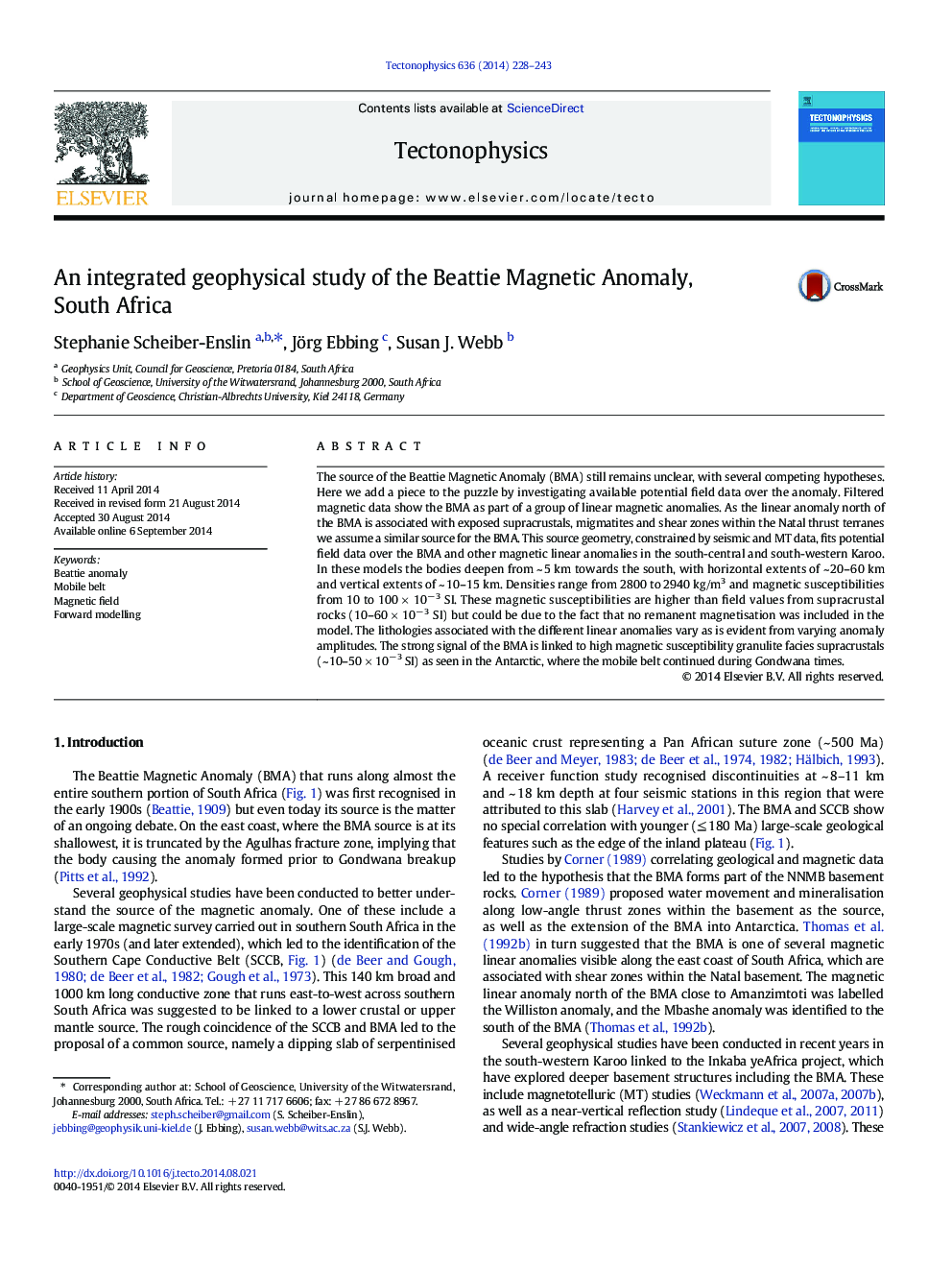| کد مقاله | کد نشریه | سال انتشار | مقاله انگلیسی | نسخه تمام متن |
|---|---|---|---|---|
| 4691800 | 1636755 | 2014 | 16 صفحه PDF | دانلود رایگان |
• The Beattie Magnetic Anomaly (BMA) is part of a group of linear magnetic anomalies.
• We inferred that the BMA is associated with Natal supracrustal rocks and shear zones.
• This source geometry, constrained by seismic and MT data, fits potential field data.
• Modelled density values range from 2800 to 2940 kg/m3.
• Magnetic susceptibilities range from 10 to 100 × 10− 3 SI (no remanence included).
The source of the Beattie Magnetic Anomaly (BMA) still remains unclear, with several competing hypotheses. Here we add a piece to the puzzle by investigating available potential field data over the anomaly. Filtered magnetic data show the BMA as part of a group of linear magnetic anomalies. As the linear anomaly north of the BMA is associated with exposed supracrustals, migmatites and shear zones within the Natal thrust terranes we assume a similar source for the BMA. This source geometry, constrained by seismic and MT data, fits potential field data over the BMA and other magnetic linear anomalies in the south-central and south-western Karoo. In these models the bodies deepen from ~ 5 km towards the south, with horizontal extents of ~ 20–60 km and vertical extents of ~ 10–15 km. Densities range from 2800 to 2940 kg/m3 and magnetic susceptibilities from 10 to 100 × 10− 3 SI. These magnetic susceptibilities are higher than field values from supracrustal rocks (10–60 × 10− 3 SI) but could be due to the fact that no remanent magnetisation was included in the model. The lithologies associated with the different linear anomalies vary as is evident from varying anomaly amplitudes. The strong signal of the BMA is linked to high magnetic susceptibility granulite facies supracrustals (~ 10–50 × 10− 3 SI) as seen in the Antarctic, where the mobile belt continued during Gondwana times.
Figure optionsDownload as PowerPoint slide
Journal: Tectonophysics - Volume 636, 1 December 2014, Pages 228–243
